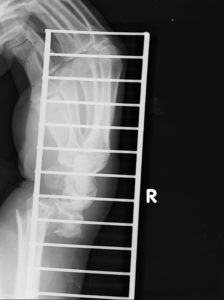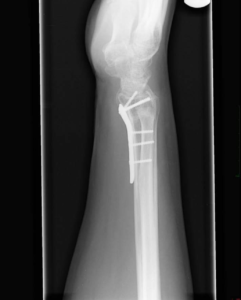Distal Radius Fractures (wrist fracture)
The wrist consists of a number of bones that form together a number of joints that create the various movement options of the palm.
Bone radius = chaining and bone ulna = gummy – bones of the aqueduct.
The end part of the radius bone is wide and has two articular surfaces. A side jointed surface that fits the end of the ulna bone, and a wide articular surface that is suitable for the bones of the wrist.
A fracture in the far part of the radius bone is usually caused by falling and direct injury.
Treatment of these fractures depends on the severity of the injury, age, and level of the patient’s activity.
Treatment of these fractures depends on the severity of the injury, age, and level of patient activity.
In fractures without movement or fractures with only a slight displacement, which are being put back in their place in the emergency room, the cast can be treated with a weekly follow-up to ensure that there is no movement in the position of the fracture.
In fractions with movement, a surgery for correction of the fracture is required.
During the surgery, the anatomical return of the fractured bone is carried out and fixed by stainless steel nails or a sealed anatomical plate. It is a titanium plate constructed to precisely fit the bone structure in the fracture area. The plate is fixed in place with screws that lock both the plate and the bone. This structure allows maximum stability of the repaired fracture and allows for early movement of the wrist.
After the operation, the surgical area is supported by a plaster plaster for about 10 days, after which it is possible to use only the wrist synthetic splint, which can be removed several times a day for exercises to improve wrist movement.
Hand before surgery:

Hand after surgery:

